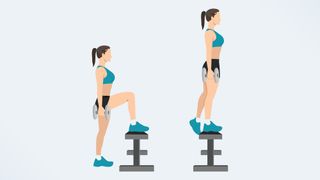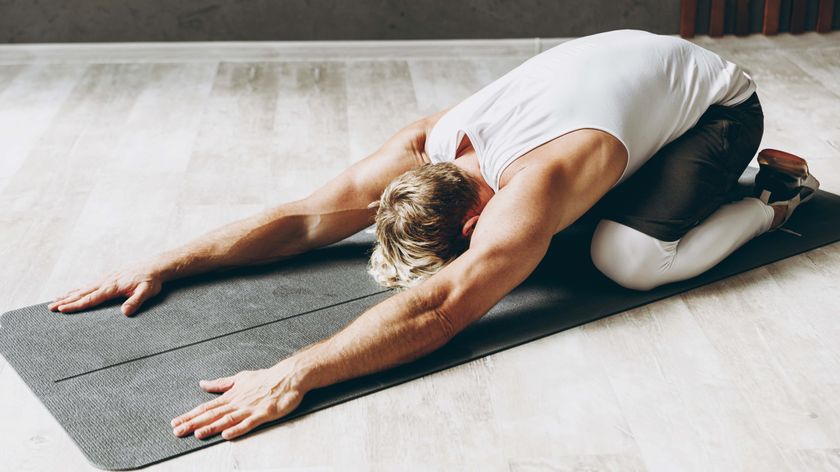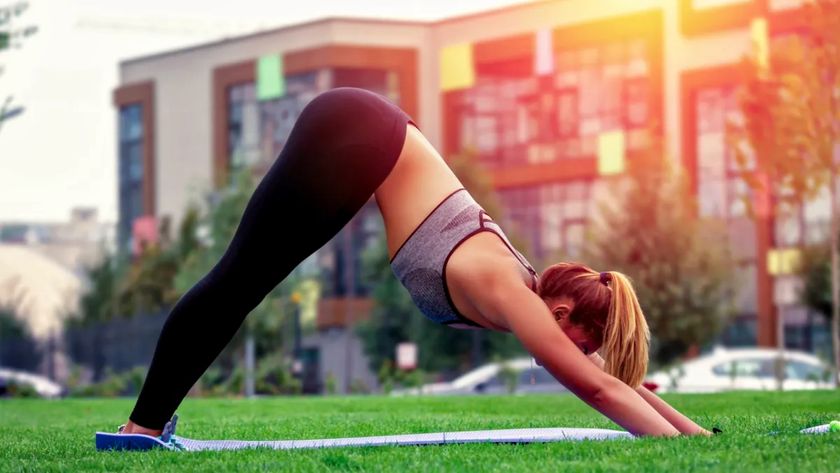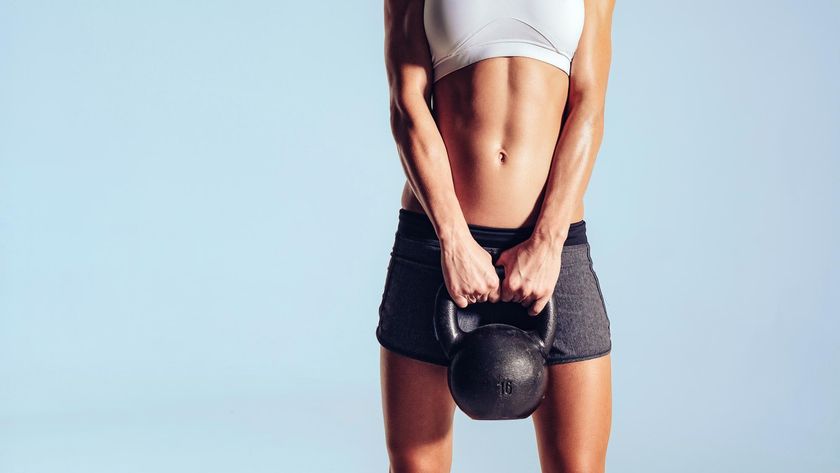Forget squats and lunges — this simple exercise increases your leg strength
Here’s how to do weighted step-ups

If like me, you’re looking to mix up your leg workouts in 2023, there’s one relatively simple move that gets you an awful lot of bang for your buck — weighted step-ups. The weighted step-up targets the quads, glutes, and hamstrings, and can be modified to suit all fitness levels. Read on to find out more about how to do weighted step-ups, the benefits of weighted step-ups, and the form mistakes to watch out for.
Weighted step-ups are a great way to work the posterior chain, which are the muscles along the back of the body. They also work the quads, which are important when it comes to improving the stability of the knee. The lower the step, the more you’re working your quads, the higher the step, the more you’re working your glutes and hamstrings. For this exercise, as its name suggests, you’ll need a step. This could be a bench or a step in your garden, or a plyo box or step box in the gym.
Looking for more workout inspiration? Take a look at the best ankle weights for upping the resistance in your leg workouts, plus what happened when I added hack squats to my workout routine, and 3 of the best resistance band leg workouts.
How to do a weighted step-up
To do a weighted step up, start by standing in front of a step, plyo box, or bench. If you’re a beginner, just use your body weight, if you’re more advanced, add a set of the best adjustable dumbbells to add intensity.

Step up on the left foot, pressing through the heel and down into the box as you step. Bring your right foot up to the box so you are standing on the box. Step down, leading with the right foot, then step your left foot down to the floor. Then repeat.
Be sure not to push up with the leg on the floor during this exercise — the strength should come from the leg on the box, and the lower leg should almost be a dead weight as you step up. You should also be careful not to let the knee move over the toes as you step up, as this can put pressure on the knee joint. If you find your knees are hurting during this exercise, it’s a good idea to ask a personal trainer to check your form to ensure you’re not at risk of injury.
What are the benefits of weighted step-ups?
Weighted step-ups are an excellent way to work on the quads, as well as the glutes and hamstrings. You’ll also want to think about engaging your core to stabilize your body as you step up and down.
Sign up to get the BEST of Tom's Guide direct to your inbox.
Get instant access to breaking news, the hottest reviews, great deals and helpful tips.
Another huge benefit of step-ups is that it’s a unilateral exercise, meaning you’re working on strengthening one leg at a time. This means you’ll quickly be able to see any imbalances in the body — we often have one leg that is stronger than the other, and the step-ups might feel easier on one side.
This is also a highly functional exercise — you’re strengthening muscles you use every day when climbing a set of stairs. What’s more, it’s very versatile. You don’t have to be in the gym to practice this move, you could even work it into a run by stopping in the park and doing some step-ups on and off a bench.
How to make weighted step ups harder?
If you’re a complete beginner, it’s a good idea to do this exercise without holding any weights, to ensure you’re getting your form correct. That said, this is still an excellent way to boost your cardio, and even experienced gym-goers can make bodyweight step-ups harder by moving faster — think a Jane Fonda step aerobics class.
That said you can also try these two variations if you really want to up the ante:
Barbell step-ups
Do the same exercise above, but instead of dumbbells, hold a barbell on your back. As you’ll be holding the barbell on your shoulders, you’ll be able to lift a heavier weight. Be sure to move slowly and with control.
Step-up jumps
This one will really get your heart rate up! Start by standing in front of the step or box, and step one foot up onto the platform, as you step up, swing the other knee up and jump off the box. Land both feet on the step before stepping down. Be sure to swap the leading foot to ensure you’re working both sides of the body. This exercise isn’t to be confused with a box jump, you’re only working one leg at a time. Here’s how to do a box jump.
Looking for more workout inspiration? Check out what happened when this writer did 50 bird dogs every day for a week, or when I tried Chris Hemsworth’s 250-rep dumbbell workout.

Jane McGuire is Tom's Guide's Fitness editor, which means she looks after everything fitness related - from running gear to yoga mats. An avid runner, Jane has tested and reviewed fitness products for the past five years, so knows what to look for when finding a good running watch or a pair of shorts with pockets big enough for your smartphone. When she's not pounding the pavements, you'll find Jane striding round the Surrey Hills, taking far too many photos of her puppy.












